Out of this world diving destinations are truly recognizable and people from all countries very often plan their trips months in advance. This trip is one of those, but also a little different for several reasons. This meet up of two friends Ivan Stankovic (XR Mares ambassador) and Predrag Vuckovic (Photography Mares ambassador) is just another trip of theirs in search of special and very unique diving locations.
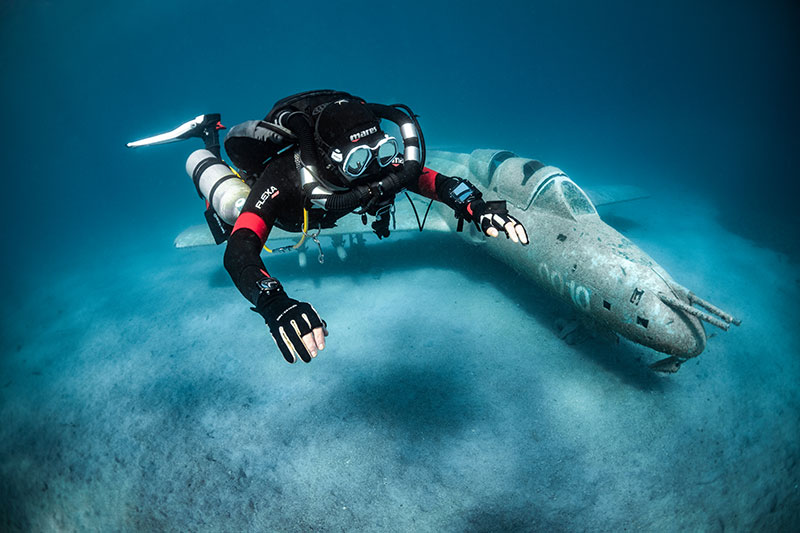
This time the choice was Croatia and a small bay near Trogir, about which not much is known. The underwater museum called Via Crucis (Stations of the Cross) with 54 submerged figures that represent the Crisis Road underwater, as also the Y1 Jastreb airplane from the old Yugoslavia make this location very special. Artificial structures like this are made from hard structure ferrocement, are eco-friendly, and they are also designed to attract fish. These structures provide on otherwise barren sea beds, marine life such as barnacles, anemones and soft coral quickly adhere to these structures. This unique underwater story is a private project of the owner and our host Josko Kandija and as such, for its theme, is not known to exist anywhere in the world.
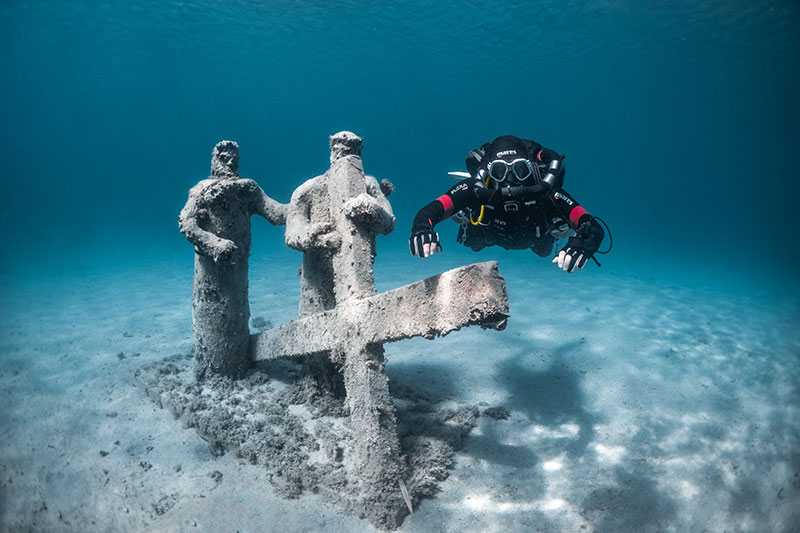
The goal of this trip was to visit this unique place and take photos underwater in order to present this unique underwater museum to more people. The new Mares Horizon SCR diving units were selected for this adventure. Exploring new locations in search of places where the new unit provides the maximum, Mares Horizon lightweight system is the ideal travel companion and does not require dedicated cylinders or weights. Simple logistics allow us to use standard nitrox gases which are easily obtained from most dive destinations, like this one.
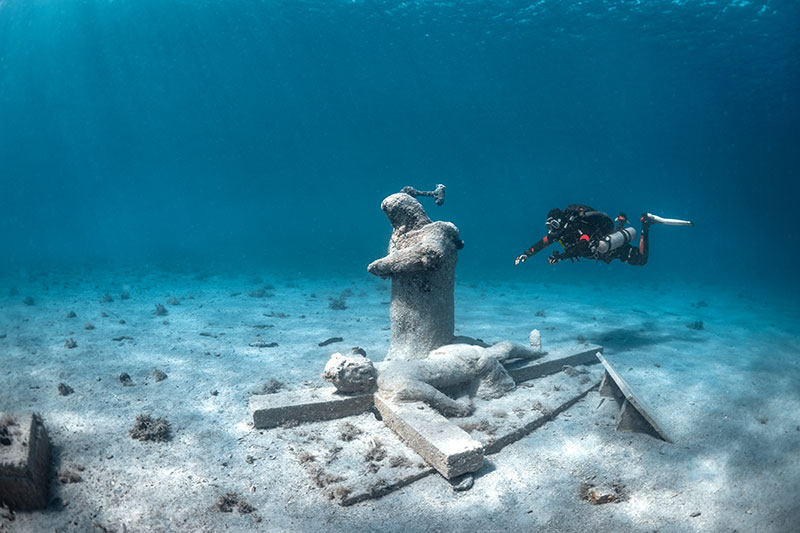
On the dive map in the area of our usual diving destination we find one of challenging dive destinations full of artificial and contemporary wrecks with historical themes where using SCR comes to the fore offers incredible extended dive time compared to open circuit dives, giving the diver the possibility to extend the time in the wonderful underwater environment in the position which improves the trim position and comfort. The permanent underwater museum setup consists of the 14 Stations of the Cross with 52 life-size statues and a large 8-meter-tall statue of Jesus Christ in the form of the 15th Station. All the statues are set on the seabed at a small depth of only 4-5 meters and the big 8 meters tall statue of Jesus Christ is placed at a depth of 10 m. In this way scuba diving is adapted to all, to the experienced divers, as well as to the very beginners, to those who have never experienced the stunning landscapes of the sea depths. Also, due to very good visibility and small depth, statues are extraordinarily set for our photoshooting and playing with equipment and SCR Horizon unit.
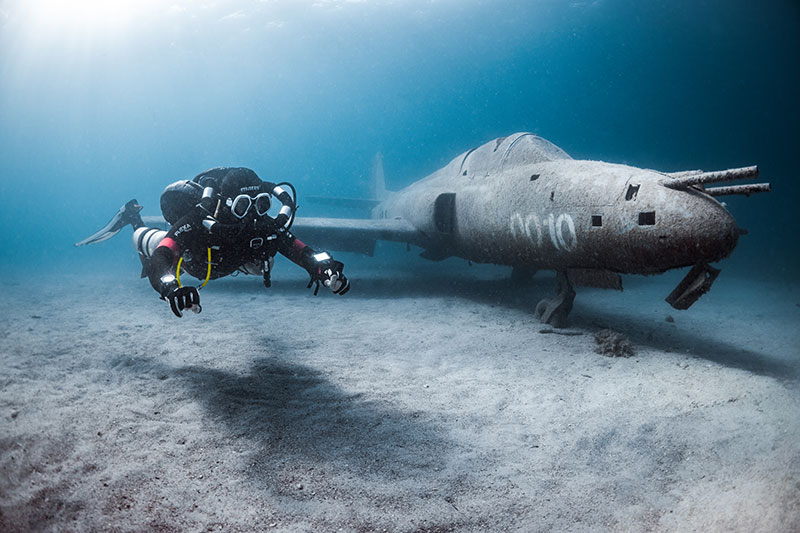
In addition to the unique historical piece of underwater sculpture, there is also a modern part of the wreck for divers who did not have the opportunity to enjoy these types of wrecks at greater depths, and this wreck is now accessible to everyone considering the depth of 10m where it is placed. It is about (English: Hawk), referred to as the J-1 Jastreb in some sources, is a Yugoslav single-seat, single-engine, light attack aircraft, designed by the Aeronautical Technical Institute (ATI) and Vojnotehnički Institut Beograd (VTI), in Belgrade and manufactured by SOKO in Mostar. Derived from the G-2 Galeb advanced jet trainer and light attack aircraft, it was designed in single-seat ground-attack and two-seat advanced flying / weapon training versions. Airplane is completely renovated cosmetically, strictly taking care of marine life and eco-friendliness, and has removed everything that could potentially pollute the environment. The construction of the aircraft remained without mechanical parts and in order for the experience to be at its peak, they put up faithful replicas of the machine guns.
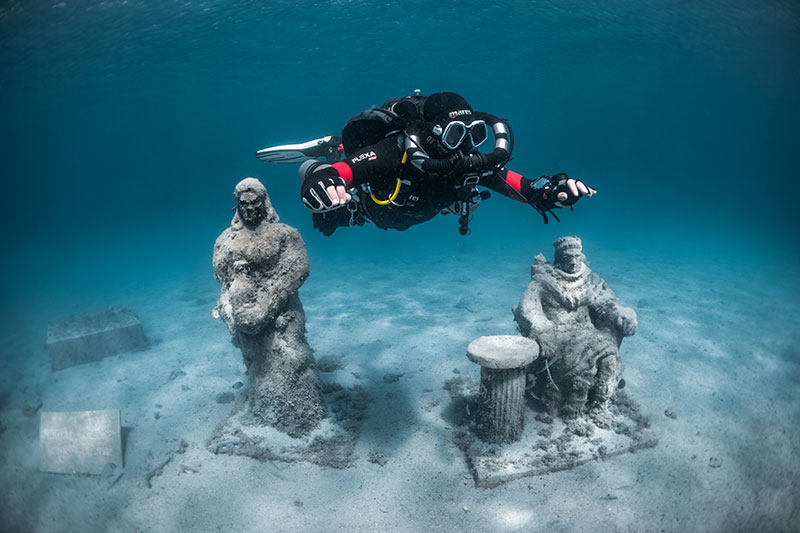
From a photography perspective, this location can best be described as a “paradise for photographers”. The possibilities underwater are incredible and expand literally every hour when the light changes. Illuminated by the sun from different sides, they create countless new photographic moments because the figures look completely different at different times of the day. Visibility is generally good because the depth is very shallow, but it can easily become photographically unacceptable due to the sandy bottom, which is easily raised by changes in currents underwater or by the diver’s inattention. All in all, the shallow water enables great and long-term fun, especially in diving conditions with the silence of the SCR Mares Horizon. After 3 days of intensive diving we finished our dives with smiles on our faces and were satisfied with the accomplished photoshoot target.


